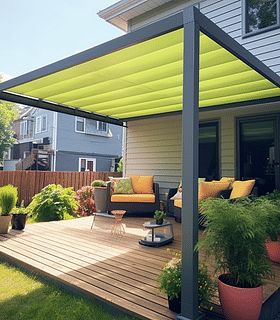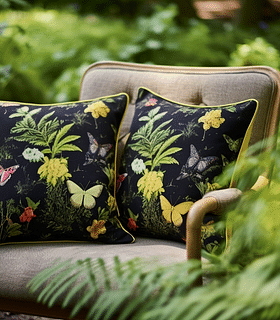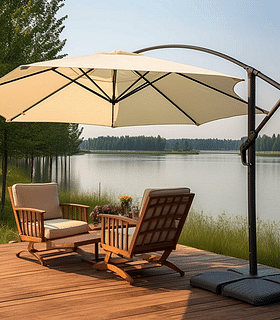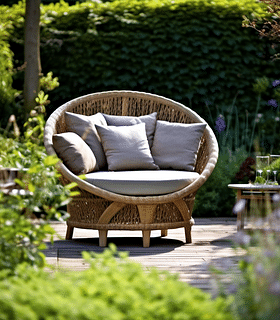The Ultimate Guide to Creating a Colorful Summer Garden
Unlock the secrets of a vibrant summer garden! Discover expert tips on what to plant in April for a colorful and stunning garden this summer. Don't miss out, read our ultimate guide now!

Do you dream of stepping into a vibrant oasis, filled with an explosion of colors and fragrances, right in your own backyard? Picture yourself surrounded by lush greenery, blooming flowers, and the joyful melodies of chirping birds. A colorful summer garden can bring a sense of joy, tranquility, and beauty to your outdoor space. And the best part? Creating your very own stunning garden doesn't have to be a daunting task. Whether you have a green thumb or not, this ultimate guide is here to help you create a colorful summer garden that will be the envy of all your neighbors. So grab your gardening gloves and let's dive in!
Introduction to Summer Gardening
In this section, we will explore the wonderful world of summer gardening. Whether you have a spacious backyard or a tiny balcony, summer gardening is a great way to enjoy the outdoors and make your living space more beautiful.
What is summer gardening and why is it important?
Summer gardening is the practice of cultivating and caring for plants during the warm summer months. It involves selecting the right plants, providing them with the necessary nutrients and water, and maintaining their overall health and appearance.
But why is summer gardening important? Well, apart from the obvious aesthetic benefits of having a beautiful garden, there are several other reasons why summer gardening is so important.
First and foremost, summer gardening allows you to connect with nature and create a peaceful and relaxing environment in your own backyard. Being surrounded by greenery and flowers can reduce stress and improve your overall well-being.
Secondly, summer gardening is a fantastic way to grow your own fruits, vegetables, and herbs. Not only is this a cost-effective solution, but it also ensures that you have fresh and healthy produce right at your fingertips.
Lastly, summer gardening provides critical habitat for pollinators like bees, butterflies, and birds. These creatures play a crucial role in the ecosystem by pollinating plants, which in turn helps to maintain biodiversity and support food production.
Benefits of a colorful summer garden
A colorful summer garden brings a burst of vibrant energy and visual delight to any outdoor space. Here are some of the benefits of having a colorful summer garden:
Improved mood and mental well-being: Surrounding yourself with a variety of colors can have a positive impact on your emotional state, helping to boost your mood and improve your mental well-being.
Attracting beneficial insects: Many colorful flowers are known to attract pollinators like bees and butterflies. By planting these flowers in your summer garden, you'll be creating a welcoming habitat for these important creatures.
Increased biodiversity: A diverse range of plants in your summer garden can attract a wide array of wildlife, from birds to beneficial insects. This biodiversity is essential for maintaining a healthy ecosystem.
Heightened curb appeal: A well-maintained and colorful summer garden can greatly enhance the curb appeal of your home. It creates a welcoming and inviting atmosphere, making your property stand out in the neighborhood.
Enjoyment of fresh produce: A summer garden filled with vibrant vegetables and herbs not only looks beautiful but also provides you with fresh, tasty, and nutritious produce. You can enjoy the satisfaction of growing your own food right at home.
Overall, a colorful summer garden not only adds beauty to your surroundings but also brings numerous benefits to your mental and physical well-being. It's a rewarding and enjoyable endeavor that allows you to connect with nature and create a haven of tranquility right in your own backyard.
Getting Started: Planning Your Colorful Garden

When it comes to planning a colorful garden, there are a few important factors to consider. In this section, we will walk you through the steps to help you create a vibrant and visually appealing garden space. Let's get started!
Assessing your garden space
Before you dive into planning your colorful garden, it's important to assess the space you have available. Take a look at your garden and consider its size, shape, and layout. This will help you determine how much space you have to work with and what types of plants will thrive in your specific environment.
Choosing the right location for your garden
The location of your garden is another crucial aspect to consider. Most plants require a certain amount of sunlight to grow and flourish. Take note of the areas in your garden that receive the most sunlight throughout the day. Aim to choose a location that receives at least six hours of direct sunlight daily.
Determining your garden's purpose and theme
Every garden has a purpose, whether it's to provide a peaceful retreat, grow your own fruits and vegetables, or simply add beauty to your outdoor space. Decide what you want your garden to be - a place to relax, a source of fresh produce, or a stunning display of colors. This will help guide your plant and color choices.
Additionally, consider a theme for your garden. Do you prefer a cottage garden, with a mix of colorful and fragrant flowers? Or maybe a modern garden with clean lines and a focus on bold, vibrant colors? Determining a theme will help you narrow down your choices and create a cohesive look.
Choosing the right colors for a vibrant garden
Now comes the fun part - choosing the colors for your vibrant garden! Colors evoke different emotions and moods, so think about the overall atmosphere you want to create in your garden.
If you're looking for a calming and serene space, opt for cool colors like blues, purples, and whites. If you want to create a lively and energizing atmosphere, go for warm colors like yellows, oranges, and reds.
Don't forget to consider color combinations that work well together. Complementary colors, such as purple and yellow, create a visually striking contrast. Analogous colors, like shades of pink and purple, offer a more harmonious and relaxing feel.
Keep in mind that flowers are not the only source of color in your garden. Foliage, garden structures, and even accessories like pots and ornaments can also add pops of color to your space.
By assessing your garden space, choosing the right location, determining your garden's purpose and theme, and selecting the perfect colors, you're well on your way to creating a vibrant and visually stunning garden. Next, we'll explore the best flowers and plants to achieve your desired color palette.
Selecting the Perfect Plants for a Colorful Summer Garden

If you're dreaming of a vibrant and colorful summer garden, then you've come to the right place. In this section, we'll help you choose the perfect plants that will add a burst of color and beauty to your outdoor space. Whether you're a seasoned gardener or just starting your gardening journey, we've got you covered.
Flowers that Bloom in Summer
One of the easiest ways to add pops of color to your garden is by selecting flowers that bloom during the summer months. These flowers will bring life to your garden and provide a stunning visual display. Some popular summer blooming flowers include:
Sunflowers: These cheerful and towering flowers add a bright and sunny touch to any garden. They come in various sizes and colors, including vibrant yellows, oranges, and reds.
Zinnias: With their bold and vibrant colors, zinnias are a favorite choice for summer gardens. They come in a wide range of shades, including red, pink, orange, yellow, and purple, which will surely make your garden a lively and animated space.
Marigolds: These versatile flowers are not only beautiful but also known for their pest-repelling properties. Marigolds are available in shades of yellow, orange, and red, and they can bloom all summer long, making them a wonderful addition to any garden.
Plants with Colorful Foliage
While flowers are a classic choice for color, don't overlook plants with colorful foliage. These plants can provide long-lasting interest and add depth to your garden. Here are some plant varieties with vibrant foliage that you can consider:
Coleus: This popular plant comes in a wide range of colors and patterns, making it a fantastic choice for adding visual interest to your garden. From lime green to deep burgundy, the foliage of coleus plants will add a dramatic touch to any garden bed or container.
Heucheras: Also known as coral bells, heucheras are admired for their attractive foliage colors, which range from dark burgundy to chartreuse and everything in between. These plants work well as ground covers or in mixed plantings and will bring a splash of color even when not in bloom.
Japanese Maples: If you're looking for a statement plant that provides stunning foliage colors, look no further than Japanese maples. These trees offer a wide range of leaf colors, including deep reds, vibrant oranges, and golden yellows. They can be a beautiful centerpiece in your garden or add height and interest to your landscape.
Perennials vs. Annuals: Which to Choose?
When planning your summer garden, you'll come across two main types of plants: perennials and annuals. Understanding the differences between these two options will help you make the right choices for your garden.
Perennials: These plants come back year after year, providing you with enduring beauty and color. While their blooms may only last for a few weeks or months, their foliage often remains attractive throughout the year. Some popular perennial plants for summer gardens include daylilies, coneflowers, and hydrangeas.
Annuals: As the name suggests, annual plants complete their life cycle in a single year. They bloom quickly and abundantly, adding instant color to your garden. Some popular annual plants for summer gardens include petunias, begonias, and impatiens.
Deciding between perennials and annuals ultimately depends on your preferences and gardening goals. Consider factors like maintenance, budget, and the desired lifespan of your plants.
Popular Plant Varieties for a Vibrant Garden
Now that you know the basics of selecting plants for your summer garden, let's explore some popular plant varieties that are known for their vibrant and striking appearances. These plants have proven to be crowd favorites and are sure to bring life into your outdoor space:
Petunias: With their wide range of colors and continuous blooming throughout the summer, petunias are a long-time favorite for many gardeners. They are versatile plants that can be grown in containers, hanging baskets, or flower beds.
Geraniums: Known for their bold and beautiful flowers, geraniums come in a variety of colors and are easy to care for. They are perfect for adding pops of vibrant color to any garden or patio.
Salvia: Salvia plants offer stunning spikes of colorful flowers that attract bees, butterflies, and hummingbirds to your garden. They are available in shades of red, purple, pink, and blue, making them a fantastic choice for a vibrant and lively garden.
By selecting a combination of summer blooming flowers, plants with colorful foliage, and popular plant varieties, you can create a colorful summer garden that will impress both you and your neighbors. Happy gardening!
Tips for Planting and Maintaining a Colorful Garden
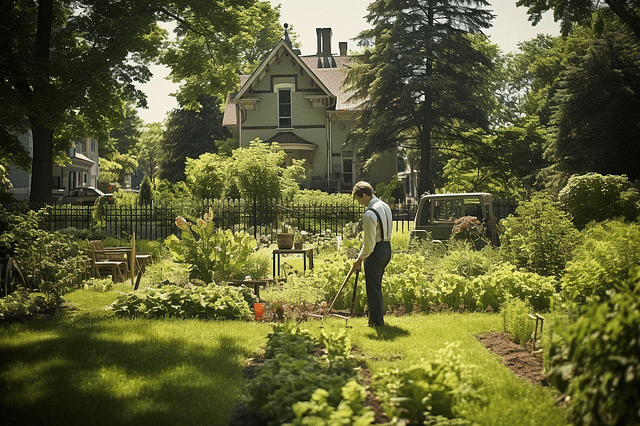
Creating a garden full of vibrant colors is a rewarding and fulfilling experience. Watching flowers bloom in a rainbow of shades can bring joy and beauty to any outdoor space. But how do you ensure that your garden stays colorful and healthy? In this section, we will share some valuable tips on planting and maintaining a garden that will burst with color all season long.
Preparing the soil for optimal growth
Before you start planting, it's crucial to prepare the soil properly. Good soil provides the foundation for healthy, thriving plants. Begin by removing any weeds or debris from the area where you plan to create your garden. Then, loosen the soil with a garden fork or tiller to ensure it's well aerated.
Next, add organic matter such as compost or well-rotted manure to enrich the soil. Organic matter not only improves soil fertility, but it also helps retain moisture and promotes beneficial microbial activity. Spread a layer of organic matter on top of the soil and mix it in thoroughly using a garden fork or tiller. This will help create a nutrient-rich environment for your plants to grow and flourish.
Proper planting techniques
When it comes to planting, proper technique is essential for the long-term health and vitality of your plants. Start by selecting high-quality, healthy plants from a reputable nursery or garden center. Look for plants with vibrant green leaves and sturdy stems.
Before planting, dig a hole that is slightly wider and deeper than the root ball of the plant. Gently remove the plant from its container and place it in the hole, making sure that it sits at the same depth as it was in the container. Fill the hole with soil, firming it gently around the plant to eliminate any air pockets. Finally, water the newly planted flowers thoroughly to settle the soil and promote root establishment.
Watering and fertilizing tips for vibrant plants
Proper watering and fertilizing are crucial for vibrant and healthy plants. Most flowering plants require regular watering to thrive, especially during hot and dry periods. Water deeply but infrequently, aiming to moisten the soil to a depth of 6 to 8 inches. This encourages the plants' roots to grow deeper, making them more resilient during periods of drought.
When it comes to fertilizing, choose a balanced fertilizer specifically formulated for flowering plants. Follow the instructions on the fertilizer package to determine the appropriate amount and frequency of application. Over-fertilization can lead to excessive foliage growth at the expense of flowers, so it's important to use the right amount.
Pruning and deadheading to encourage continuous blooming
Pruning and deadheading are essential tasks for maintaining continuous blooming throughout the growing season. Pruning involves cutting back overgrown or damaged branches to promote new growth and maintain the shape and size of the plant. Deadheading, on the other hand, involves removing faded or spent flowers to encourage the production of new buds.
Regular pruning and deadheading help redirect the plant's energy toward producing more blooms. It also prevents the formation of seed heads, which can divert nutrients away from flower production. Remember to use clean, sharp pruning tools and make clean cuts just above leaf nodes or lateral branches to stimulate new growth.
Dealing with common garden pests and diseases
Even the most careful gardeners may encounter pests and diseases in their colorful garden. Common garden pests include aphids, slugs, snails, and caterpillars, while diseases such as powdery mildew and black spot can affect the health and appearance of plants.
To prevent pest infestations, regularly inspect your plants for early signs of damage or pests. Consider using natural remedies like insecticidal soaps or neem oil, which are safer alternatives to chemical pesticides. Encourage beneficial insects like ladybugs and lacewings, which prey on garden pests.
If you notice signs of diseases, such as discolored or spotted leaves, take immediate action. Remove and destroy affected plant material to prevent the spread of disease. Applying fungicides or using organic treatments like a baking soda and water spray can also help control some common plant diseases.
By following these tips for planting and maintaining a colorful garden, you can create a vibrant and flourishing outdoor space that will bring you joy and delight throughout the growing season. Enjoy the process of gardening, and revel in the beauty of your colorful blooms!
Designing Your Colorful Garden Landscape
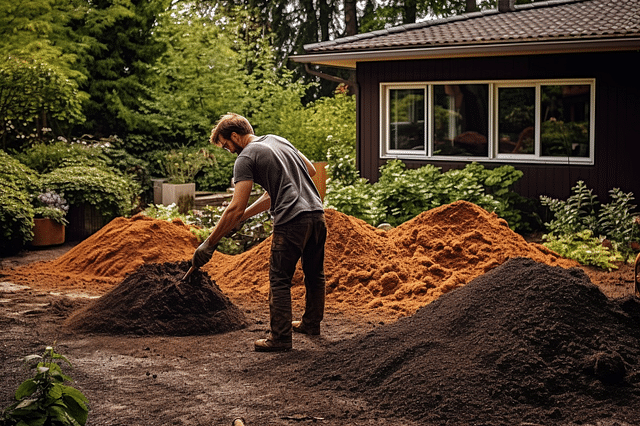
A beautiful, colorful garden brings life and vibrancy to any outdoor space. Whether you have a large yard or a small patio, designing your garden landscape with a variety of colors can create a visually stunning and inviting atmosphere. In this section, we will explore different techniques and ideas for designing a colorful garden that will make your outdoor space stand out.
Creating focal points and visual interest
One way to add visual interest to your garden is by creating focal points. Focal points are specific areas or elements in your garden that draw the eye and create a sense of focus. They can be anything from a sculpture or water feature to a brightly colored plant or flower bed. By strategically placing these focal points throughout your garden, you can create a sense of depth and visual intrigue.
To create focal points, consider placing taller plants or structures at strategic points in your garden. This can help draw the eye upward and create a sense of vertical interest. Additionally, using plants with interesting shapes or textures, such as ornamental grasses or flowering shrubs, can also help create focal points.
Incorporating different heights and textures
Adding variety in terms of height and texture is another key aspect of designing a colorful garden. By incorporating plants of different heights, you can create a visually appealing layered effect. For example, you can use tall plants such as sunflowers or hollyhocks at the back of your flower beds, medium-sized plants like roses or geraniums in the middle, and shorter plants such as marigolds or pansies at the front.
In addition to height, consider incorporating plants with different textures. This can include plants with smooth leaves, rough bark, or feathery foliage. By combining plants with contrasting textures, you can add depth and visual interest to your garden.
Using containers and hanging baskets for added color
If you have limited space or a small balcony, don't worry! You can still design a colorful garden by using containers and hanging baskets. Containers come in a variety of shapes, sizes, and colors, allowing you to create a customized display of your favorite plants.
When choosing plants for containers, opt for those that provide a burst of color. Brightly colored annual flowers such as petunias, geraniums, or marigolds are excellent choices and will add a vibrant touch to your garden. You can also mix and match different flowering plants to create an eye-catching display.
Hanging baskets are another great way to add color to your garden landscape. Hang them from pergolas, fences, or even tree branches to create a striking vertical display. Choose trailing and cascading plants such as trailing petunias or ivy geraniums, as they will create a stunning visual effect when hung in baskets.
Creating harmony and contrast with companion plants
To achieve a harmonious and visually pleasing garden, consider using companion plants. Companion plants are those that complement each other in terms of color, form, or growth habit. By pairing plants that have contrasting colors or textures, you can create a dynamic and visually appealing garden.
For example, pairing purple-flowered plants like lavender with yellow or orange-flowered plants like marigolds can create a striking contrast. Similarly, combining plants with different leaf shapes or textures can also create a visually interesting display.
Consider using a color wheel as a guide when selecting companion plants. Colors that are opposite or adjacent to each other on the color wheel tend to work well together and can create a harmonious color scheme in your garden.
By incorporating these techniques and ideas for designing your colorful garden landscape, you can create a visually stunning outdoor space that will be a joy to spend time in. Experiment with different colors, textures, and plant combinations to find what works best for your unique space and personal taste.
Caring for Your Colorful Garden Throughout the Summer

Ah, the summer season-filled with sunny days, outdoor barbecues, and vibrant gardens bursting with color! If you're a proud gardener, you know that the summer months require a little extra TLC to keep your garden looking its best. In this section, we'll explore some essential tips and tricks to help you care for your garden throughout the summer season.
Summer garden maintenance checklist
To keep your garden in top shape, it's important to have a summer garden maintenance checklist. This will serve as your handy guide to ensuring that no aspects of your garden go neglected. Here are some important tasks to include in your checklist:
Watering: The hot summer weather can quickly dry out your flowers and plants. Be sure to water them regularly, especially during heatwaves or extended dry spells.
Weeding: Weeds can be a nuisance in any garden. Regularly remove them to prevent them from competing with your plants for nutrients and water.
Pruning: As your plants continue to grow, they may need some pruning to maintain their shape and appearance. Additionally, removing dead or damaged parts can encourage new growth.
Fertilizing: Consider adding organic fertilizers to provide your plants with the necessary nutrients they need to thrive throughout the summer months.
Mulching: Applying a layer of mulch around your plants helps retain moisture, suppress weeds, and maintain a cooler soil temperature.
Checking for pests: Keep an eye out for any pests or diseases that may be affecting your plants. Early detection can help prevent further damage.
Protecting plants from extreme heat and drought
High temperatures and drought can be tough on your garden, but with a little extra care, you can help your plants withstand the stress. Here are some tips for protecting your plants from extreme heat and drought:
Water deeply: Instead of shallow watering, make sure to water your plants deeply. This encourages the roots to grow deeper and makes them more resilient to drought.
Water in the morning: Watering your plants in the early morning allows them to absorb moisture before the heat of the day sets in. Avoid watering in the evenings, as this can promote fungal diseases.
Provide shade: If possible, create some shade for your plants during the hottest part of the day. This can be done using shade cloths or by planting taller plants nearby to provide natural shade.
Use mulch: Apply a layer of mulch around your plants to help retain moisture in the soil and keep the roots cool. Organic materials like wood chips or straw work well for this purpose.
Tips for extending the blooming season
Wouldn't it be wonderful to enjoy a garden filled with blooms throughout the entire summer? With a few simple tips, you can extend the blooming season of your garden. Here are some ideas:
Deadhead flowers: Regularly remove spent flowers to encourage new blooms to form. This process, known as deadheading, redirects the plant's energy into producing more flowers.
Plant for succession: When planning your garden, choose a mix of early-, mid-, and late-season blooming plants. This way, you'll have a continuous display of flowers throughout the summer.
Provide extra nutrients: Give your blooming plants an extra boost by fertilizing them with a bloom-boosting fertilizer. Be sure to follow the instructions on the package for best results.
Consider container gardening: Growing flowers in containers allows you to move them around to different areas of your garden, maximizing their exposure to sunlight and extending their blooming period.
Harvesting and using fresh produce from your garden
One of the joys of having a garden is being able to harvest and enjoy the delicious produce it produces. Here are some tips for harvesting and making the most of fresh produce from your garden:
Harvest at the right time: Different fruits and vegetables have different optimal times for harvesting. Do some research or consult gardening resources to ensure you're harvesting your produce at the peak of ripeness.
Handle with care: When harvesting, gently handle the plants to avoid damaging them. Use clean, sharp tools to cut fruits and vegetables from the plant to minimize stress on the plant.
Preserve the harvest: If you have an abundance of fresh produce, consider preserving it for future use. Options like canning, freezing, and drying allow you to enjoy your garden's bounty year-round.
Get creative in the kitchen: From salads to smoothies to homemade jams, there are countless ways to use the fresh produce from your garden. Let your creativity shine in the kitchen and enjoy the flavors of your hard work.
With these tips in mind, you can ensure that your garden stays vibrant, healthy, and productive throughout the summer season. So grab your garden gloves and get ready to enjoy a glorious summer in your colorful garden!
Conclusion
Congratulations! You have successfully created a beautiful and vibrant summer garden. Now it's time to sit back, relax, and enjoy the fruits of your labor.
Enjoying the fruits of your labor
Take a moment to appreciate all the hard work you put into your garden. Whether it's the tomatoes you grew from seed, the flowers that bloomed with your care, or the herbs that add flavor to your meals, savor the satisfaction of seeing your garden thrive.
Harvest your fresh produce and enjoy the taste of homegrown goodness. Experiment with different recipes and share your bountiful harvest with friends and family. Not only will you be able to enjoy the delicious flavors, but you'll also take pride in knowing that you grew them with your own hands.
Creating lasting memories in your colorful summer garden
Your summer garden is not just a source of beauty and nourishment, but also a place where memories are made. It's where you spent hours digging in the soil, planting seeds, and tending to your plants. It's where you gathered with loved ones for picnics and barbecues. It's where you watched your children play and learn about nature.
Make the most of your summer garden by creating lasting memories. Host backyard parties and invite friends and neighbors to enjoy the serene atmosphere and vibrant colors. Set up a cozy seating area where you can relax and appreciate the beauty of your garden. Take photographs of your favorite flowers and plants to capture these moments for years to come.
Remember, a colorful summer garden is not just about the aesthetic appeal, but also about the experiences and memories it brings. Cherish these moments and let your garden be a place of joy and inspiration.
Trending products
Shop outdoor accessoriesFrequently asked questions
- What are some expert tips for creating a colorful summer garden?
- Some expert tips for creating a colorful summer garden include planting a variety of flowers in different colors, incorporating different textures and heights in your garden design, and ensuring you have a good balance of sun and shade.
- When is the best time to start planting for a colorful summer garden?
- The best time to start planting for a colorful summer garden is in April. This allows the plants to establish their roots and flourish during the summer months.
- What are some colorful flowers that are perfect for a summer garden?
- Some colorful flowers that are perfect for a summer garden include petunias, marigolds, zinnias, dahlias, and geraniums. These flowers come in a variety of vibrant colors and can add a touch of beauty to any garden.
- How can I ensure my summer garden stays colorful and vibrant all season long?
- To ensure your summer garden stays colorful and vibrant all season long, make sure to deadhead spent flowers regularly, water your plants regularly, mulch to conserve moisture, and fertilize according to the specific needs of each plant.
- Are there any specific plant combinations that work well for a colorful summer garden?
- Yes, some plant combinations that work well for a colorful summer garden include planting purple salvia with yellow marigolds, pink petunias with white alyssum, and red geraniums with blue lobelia. These complementary color combinations create an eye-catching and vibrant display.
- How much sunlight does a colorful summer garden need?
- Most colorful summer flowers thrive in full sunlight, so it is best to provide them with at least 6 to 8 hours of direct sunlight per day. However, some shade-loving plants can also add color and interest to a garden with less sun exposure.
- Can I create a colorful summer garden in a small space or container?
- Absolutely! You can create a colorful summer garden in a small space or container by choosing compact or trailing varieties of flowers and plants. Hanging baskets, window boxes, and vertical gardens are also great options for adding color to limited spaces.
- How often should I water my colorful summer garden?
- The frequency of watering your colorful summer garden will depend on various factors such as the weather, soil type, and individual plant needs. It is generally recommended to water deeply at least once a week, ensuring the soil is evenly moist.
- Are there any special considerations for creating a colorful summer garden in a hot climate?
- Yes, in a hot climate, it is important to select plants that can withstand high temperatures and drought conditions. Choose heat-tolerant flowers and plants such as portulaca, lantana, and succulents, and make sure to provide them with adequate shade and water.
- How can I attract butterflies and hummingbirds to my colorful summer garden?
- To attract butterflies and hummingbirds to your colorful summer garden, plant nectar-rich flowers such as butterfly bush, bee balm, coneflowers, and salvia. Providing a water source such as a birdbath or small fountain can also help attract these beautiful creatures.
Are you looking for more ideas?
Have a look at these other guides about improving your garden and patio to create your dream outdoor space!
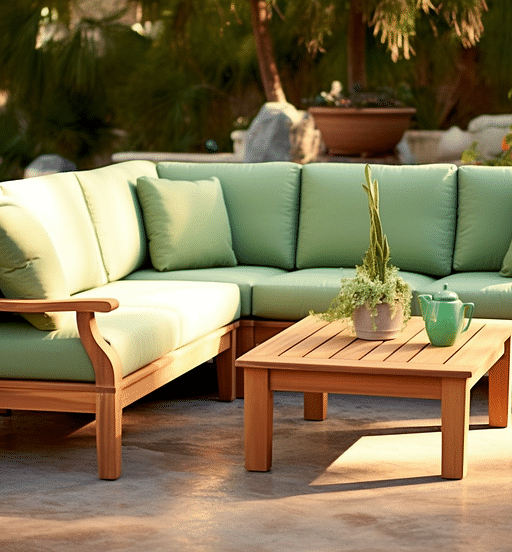
Are you looking for more ideas?
-
- Role
- How to Choose the Right Gazebo for Your Backyard
- Description
- Discover the best gazebo for your backyard oasis! Our comprehensive guide will help you choose the right gazebo at the perfect cost.
-
- Role
- How to Easily Convert Your Beach Umbrella to a Patio Umbrella
- Description
- Learn how to effortlessly transform your beach umbrella into a versatile patio umbrella. Enhance your outdoor experience with this simple and effective conversion method. Upgrade your shade game today with our step-by-step guide.
-
- Role
- How to Create a Backyard Oasis: The Ultimate Guide to Transforming Your Outdoor Space
- Description
- Transform your outdoor space into a tranquil paradise with our ultimate guide on creating a backyard oasis. Unlock the secrets to designing, decorating, and landscaping your way to a peaceful and stunning outdoor retreat. Get ready to enjoy endless summer evenings in your own personal haven.
-
- Role
- Awesome Backyard Makeover Ideas to Level-Up Your Outdoor Spaces
- Description
- Get inspired with these Awesome Backyard Makeover Ideas for This Year. Freshen up your yard and transform it into a stunning outdoor oasis. Start your backyard makeover with these amazing ideas and create a beautiful space you'll love.
